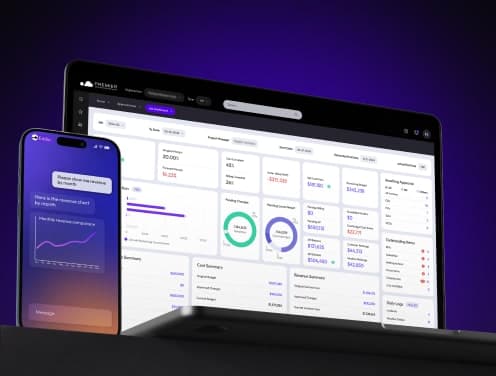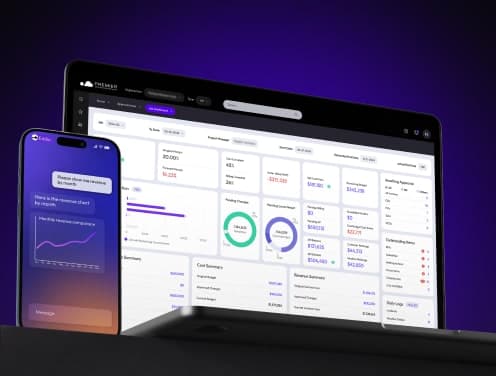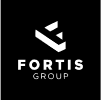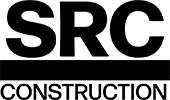
How to Implement Foolproof Construction Document Control Procedures: Expert Guide
Construction professionals waste 35% of their time looking for project information. They spend 5.5 hours every week searching for plans and documents instead of doing crucial project work.
Poor document control affects construction projects way beyond wasted time. The construction industry faces more lawsuits than most others. Documentation problems can trigger expensive legal battles that hurt both reputation and workflow. Poor document management also creates costly mistakes that need extra materials and labor to fix.
A well-laid-out document control system helps construction teams dodge these problems. Cloud-based solutions let teams work together smoothly while keeping detailed records of contracts, change orders, and safety plans. This piece gets into proven methods to set up reliable construction document control systems. These systems cut down on paperwork, speed up decisions, and protect companies when disputes arise.
Document Control Basics for Construction
Document control is the foundation of successful construction project management. A well-laid-out control system ensures accuracy, accessibility, and security throughout a document's lifecycle.
Key terms to know
Document Control is a subset of document management that defines the principles for managing various document activities. The system has eight vital features: access controls, monitoring alerts, auto-deletion rules, document storage, version history tracking, mobile access, search capabilities, and version rollback options.
Document Lifecycle describes how documents progress from creation to archival. An engineering drawing goes through original creation, approval, construction phase, and final as-built documentation. Premier Construction Software optimizes this process with integrated document management tools that track each stage automatically.
Document Classification organizes similar document types into categories based on filing requirements, accessibility, permissions, and retention schedules. Teams can quickly identify and apply the right rules for each document category through this systematic approach.
Required document types
Construction projects need specific documentation to succeed. Here are the essential documents required:
- Design Documents: Architectural drawings, engineering specifications, and site plans that detail the project's visual and technical aspects
- Contract Documents: Agreements, general conditions, and special conditions that outline responsibilities and terms
- Technical Documents: Submittals, RFIs, and change orders that manage project modifications
- Quality Control: Daily reports, inspection records, and safety plans that maintain project standards
The construction industry is one of the most litigation-prone fields, making proper document control vital. Construction professionals spend approximately 5.5 hours weekly looking for project information. A centralized document management system cuts this time waste by organizing files logically and maintaining clear version control.
Document control procedures guide day-to-day operations through specific protocols for:
- Document creation and publishing
- Review and approval workflows
- Revision tracking
- Utilization coding systems
These procedures enable smooth collaboration between office and job sites, supporting communication among general contractors, architects, engineers, and subcontractors. On top of that, they help maintain organized archives that teams can easily retrieve after project completion.
Building Your Digital Filing System
A standardized digital filing system is the foundation of good document control. Well-organized digital files save time and optimize project workflows.
Folder structure setup
Teams work better with a consistent folder hierarchy that spans all projects. This approach makes file location quick and simple. New team members can get up to speed faster while existing staff face less confusion. The simple folder structure should include:
- Project Files
- Reports
- Meeting Minutes
- Drawings
- Permits
- Contracts
- Change Orders
- Purchase Orders
File names are vital to document organization. Using a format like 'ProjectName_TypeofDocument_Title_Date' makes searching easier. File names should avoid special characters and spaces - underscores or hyphens work better.
Cloud storage selection
Cloud-based storage brings three major benefits. Documents become accessible from anywhere through centralized storage. Your files stay protected with automatic backups. Team members can work together in real time.
Modern cloud platforms come with features like version control, access permissions, and tools for real-time collaboration. These tools keep documents secure while making teamwork more efficient.
Premier Construction Software integration
Premier Construction Software combines document control with other construction management features like financial management and job costing in one platform. The system gives architects, clients, and subcontractors their own portals, which makes collaboration uninterrupted through guest access.
The software handles approval workflows automatically for various document types, including:
- RFIs
- Variations
- Purchase orders
- Subcontracts
- Submittals
This automation reduces turnaround times and creates clear documentation trails. The platform connects with supplier and subcontractor networks to minimize supply chain disruptions.
System maintenance is vital for the best performance. Daily file checks and weekly system audits help spot problems before they affect project schedules. Teams and guest users get real-time access, with customizable signature requirements built into the software.
Setting Document Security Rules
Security breaches in construction projects can lead to severe financial losses and project delays. Project data needs protection from unauthorized access and cyber threats through proper document security rules.
Access level matrix
Role-based access control (RBAC) are the foundations of document security. The system gives permissions based on job functions instead of individual users. Premier Construction Software combines smoothly with detailed controls through a well-laid-out access matrix that defines:
- Project Manager Access - Complete document control and sharing rights
- Site Supervisor Access - Field documentation and daily reports
- Subcontractor Access - Task-specific documentation only
- Client Access - Approved submissions and progress reports
- Vendor Access - Purchase orders and material specifications
Each role gets specific permissions to view, edit, or share documents. The matrix helps you retain control of document integrity through unchangeable audit logs that track all user actions.
External sharing protocols
Construction teams don't deal very well with text messages and emails for project communications. Secure external sharing just needs multiple layers of protection. Password-protected links with 256-bit AES encryption protect sensitive files during transfer.
Multi-factor authentication adds a great security barrier against unauthorized access. More hosted security solutions are flexible protection that remote workers and on-site teams can access easily.
Data loss prevention (DLP) scans uploaded documents for sensitive content patterns. The system then enforces sharing restrictions based on document classification automatically. External sharing is necessary for collaboration, but strict protocols prevent data breaches through:
- Time-limited access links
- Download restrictions
- Watermarking of sensitive documents
- Automated access revocation
- Activity logging and alerts
Regular security audits spot potential vulnerabilities. Construction firms must create incident response plans to handle security breaches quickly. Companies risk substantial financial losses and damaged client relationships without proper security measures protecting project data.
Premier Construction Software combines these security features smoothly while enabling collaboration between internal teams and external partners. The platform's security framework monitors all document activities and creates detailed audit trails for compliance and risk management.
Creating Review Workflows
Efficient review workflows help speed up project timelines and cut down on pricey delays. Construction firms spend an average of USD 1,080 responding to individual RFIs.
Submittal process
The submittal process confirms that materials and equipment meet project specifications. We prepared submittals for:
- Shop drawings
- Material specifications
- Product data sheets
- Sample materials
- Quality certificates
Premier Construction Software makes submittal logs automatic. This speeds up creation and cuts down on errors. The system keeps track of each submission from the first submission until final approval. Digital submittal management cuts processing time by 50%.
RFI handling
RFIs help clear up information gaps in construction documents. Poor RFI management can bring projects to a halt and push costs up to USD 859,000. Digital RFI systems tackle these challenges with standard templates and automatic routing.
Good RFI handling needs clear protocols:
- Define what makes a valid RFI
- Outline required documentation
- Set response timeframes
- Establish review hierarchies
- Track resolution status
Premier Construction Software brings all RFI communications together on one platform. Teams can avoid email chains and text messages that often result in lost information.
Change order tracking
Change orders, update original project agreements and change budgets. Just like RFIs, change orders need detailed documentation and quick processing. Digital platforms make both upstream and downstream change order workflows more efficient.
The change order process has:
- Cost impact assessment
- Schedule adjustment calculations
- Approval routing
- Budget integration
- Payment application updates
Automatic change order tracking creates clear accountability trails. It connects project and cost management by moving RFIs to potential change orders when needed. The system creates standard documentation formats that save time and keep consistency across projects.
Premier Construction Software syncs approved change orders with project budgets automatically. This immediate integration shows financial impacts right away. The platform also makes RFQ distribution simpler when checking change order costs, letting teams reach multiple suppliers through a single workflow.
Field Team Document Access
Construction field teams need quick access to project documents wherever they work. Research shows 36% of construction firms use more than five different mobile apps to handle their documentation needs.
Mobile app requirements
Premier Construction Software's mobile platform delivers vital project information straight to field teams. The app comes packed with these significant functions:
- Immediate document markup and annotation
- Native talk-to-text for quick field notes
- Direct photo uploads with location tagging
- Quick RFI submission capabilities
- Push notifications for updates
Team members can write comments, draw changes, and add markups together through shared features. The 6-month old system lets superintendents create daily field logs as work moves forward. They use built-in voice dictation tools to work faster.
Premier Construction Software's easy-to-use mobile interface makes speed and simplicity the top priority. Field crews capture project information without getting lost in complex menus or settings. The platform works smoothly with popular services like Dropbox, iCloud, and Google Docs.
Offline sync capabilities
Poor internet connectivity is common at construction sites. Offline capabilities are vital for keeping work moving forward. The system downloads selected documents automatically for offline access. Teams can:
- View and edit documents without internet connection
- Capture site photos and notes
- Complete inspection forms
- Track equipment and materials
- Document QA/QC processes
The system syncs all changes automatically when internet connection returns. Teams pick specific folders and files they need offline to save device storage. Green check marks show up next to successfully downloaded items, helping teams track sync status.
Premier Construction Software's offline mode keeps version control intact. The system handles any conflicts between offline changes and cloud updates when teams reconnect. The platform gives clear options to resolve conflicts if multiple team members change the same document while offline.
Teams can maximize performance by:
- Downloading documents over WiFi connections
- Keeping apps open during initial sync
- Adjusting device sleep settings
- Checking sync status indicators
The mobile platform uses role-based permissions to give the right access levels to different team members. Project managers control document sharing settings and keep security protocols from the main system. This organized approach cuts down confusion and maintains proper document control through all project stages.
Quality Control Checkpoints
Quality checks are the life-blood of document control systems that work. Teams can catch errors early through proper auditing and prevent things from getting pricey or delayed.
Daily file audits
Daily construction reports show how projects are progressing. These reports keep track of performance, productivity, and problems that could affect timelines. Premier Construction Software makes daily audits easier through:
- Version control verification
- Document access tracking
- Change log reviews
- Signature validation checks
- Distribution list updates
Daily audits help us spot gaps in documentation that might affect project outcomes. Construction teams should record quality control inspections and results to keep standards high. These records help teams communicate better with stakeholders and tackle problems quickly.
Weekly system checks
Weekly reviews verify if document control is working well. The checks get into:
- Security protocol compliance
- Backup system functionality
- User permission accuracy
- Storage capacity monitoring
- System performance metrics
Construction firms that skip these regular system checks face higher risks of losing documents and version control problems. Weekly reviews keep systems reliable and prevent documentation bottlenecks.
Quick action on problems found during system checks helps avoid project delays. Construction teams should use simplified processes that show best practices for document control. These processes need to specify:
- Update procedures
- Review requirements
- Notification protocols
- Permission levels
- System maintenance schedules
Good documentation for audits saves contractors time and reduces stress. Quality control checkpoints show if projects are on track. Premier Construction Software simplifies these processes by automating routine checks and creating detailed audit reports.
Construction teams usually do audits when project milestones are complete. The audit process just needs a full review of documentation and vendor invoices to check if they line up with contractor billing. Teams should fix any issues quickly to stay compliant with contract requirements.
Daily and weekly quality checks support internal control systems by proving project managers are doing their jobs right. These checkpoints maintain proper documentation trails that are a great way to get through regulatory inspections or resolve disputes.
Premier Construction Software's automated quality control features let teams:
- Track document changes live
- Create detailed audit reports
- Monitor system performance metrics
- Keep detailed compliance records
- Automate routine verification tasks
Regular system maintenance keeps document control running at its best. Construction teams can minimize risks and maximize efficiency throughout the project by using consistent quality control checkpoints.
Automating Manual Tasks
Construction teams waste precious time handling documents manually. Teams can cut down administrative work by 35% with automation tools that optimize processes.
Auto-filing setup
Premier Construction Software's auto-filing system organizes documents through rules you set up ahead of time. The platform lets you file documents in several ways:
- Schema-based organization by document type
- Date-based filing for chronological records
- Fixed destination paths for standard documents
- Metadata-driven sorting for custom organization
The system cuts down errors by removing manual data entry. It spots document metadata on its own and sends files where they need to go. This prevents misfiling and keeps organization consistent across projects.
Notification rules
Teams stay updated on important changes through document notifications. The system alerts users through several channels:
- Email notifications
- In-app messages
- Desktop pop-ups
- Mobile push alerts
Team members can choose which document types or folders they want updates about. Administrators control team-wide subscriptions from a central dashboard. The notification system watches for:
- Document modifications
- Review requests
- Approval status changes
- File imports
- Version updates
Premier Construction Software's notification engine creates rules based on project roles. This targeted approach cuts down on alert overload and keeps communication channels clear.
Report generation
The system turns field data into useful insights through automated reporting. Teams get daily construction reports with minimal manual work. These reports show:
- Project progress updates
- Labor allocation details
- Equipment usage logs
- Material consumption data
- Safety incident records
Construction teams save 5.5 hours each week thanks to automated report generation. The platform pulls information from multiple sources and creates complete documentation automatically. This lightens the administrative load and makes reports more accurate.
Premier Construction Software's reporting tools work with templates you can customize. Project managers set up report layouts based on their needs. Teams adjust these templates when projects have special requirements or client priorities.
The platform's AI scans documents and pulls out relevant data. This speeds up reporting and keeps it consistent across projects. Automated workflows route reports to stakeholders who need to review them.
Document automation goes beyond simple file management. The system creates audit trails and tracks every document interaction. This detailed record-keeping helps with compliance and protects companies during disputes.
Premier Construction Software blends these automation features naturally. The platform connects to your existing tools through API interfaces. Teams can work smoothly and reduce manual tasks through smart automation.
Measuring ROI
Measuring document control systems shows clear financial advantages. Knowledge workers spend about 2.5 hours each day looking for information. This shows why we need better document management.
Time tracking
Premier Construction Software's time tracking makes project documentation easier. Field crews can log time from their mobile devices and send data to payroll systems naturally. Time card entries show up right away in daily logs and project reports.
Time tracking software brings many benefits:
- Cuts down on time entry mistakes
- Makes employees more accountable
- Makes payroll faster
- Keeps track of billable and non-billable hours
- Captures work details
Construction firms that use document management systems work 20% faster. This boost comes from finding documents faster and simpler processes. A knowledge worker saves USD 19,732 each year by using better document management.
Premier Construction Software's time card app lets you set up entry fields that work with different accounting systems. This flexibility helps construction teams adapt to what each project needs. You can track cost codes, total hours, and work details for every time entry.
Cost analysis
Document management problems cause 21.3% of productivity losses in construction firms. Lost documents cost USD 350 to USD 700 in administrative costs, while misfiled ones cost USD 125 each.
Paper document management costs USD 20 per document. Digital systems cut costs by:
- Using less paper for printing and copying
- Needing less storage space
- Reducing administrative work
- Finding documents faster
- Making fewer mistakes and duplicates
Premier Construction Software's platform shows ROI in many ways. Managers can see labor costs as work happens. This helps them control budgets and find ways to save money.
Construction firms usually see ROI from document control software within 3-6 months. Companies using old-style time cards have 1-8% error rates, according to the American Payroll Association. Digital systems cut these mistakes with automatic checks and standard processes.
Time theft affects construction budgets by a lot. Workers take about 4 hours and 5 minutes extra each week. Premier Construction Software fixes this with GPS time tracking and geofencing. Workers clock in and out at specific job sites, and the system keeps accurate records even offline.
Companies save money after switching to digital document control:
- USD 75,000 less in time card fraud in one year
- USD 50,000 saved yearly in administrative costs
The platform's cost tools help track:
- Overtime details
- Break time
- Travel time
- Task costs
- Labor expenses
Premier Construction Software works with QuickBooks, Sage, and other popular accounting systems. This makes payroll easier and cuts down on office work. You can create custom cost reports sorted by date, employee, project, or billing status.
ROI from document control comes from direct and indirect savings. Direct savings include lower paper and storage costs. Indirect benefits come from better compliance, faster decisions, and less risk of legal issues. The system's audit trails and version control protect companies during disputes and help meet regulations.
Conclusion
Document control systems are reshaping construction project management with measurable results. Users of Premier Construction Software cut their administrative work by 35% and save about 5.5 hours each week when searching for documents.
Several improvements make these benefits possible. Digital filing systems do away with paper-based inefficiencies. Security measures protect sensitive data while you retain control over collaboration. Reviews and approvals move faster with automated workflows. Mobile apps give field teams instant access to current documents.
The financial results are impressive. Companies prevent time card fraud and save $75,000 every year. Their administrative costs go down by $50,000 annually. The cost of lost documents drops from $700 to almost nothing per case.
Quality control steps catch mistakes early to prevent work that gets pricey to fix. Documentation stays accurate with daily audits. System checks each week confirm everything works properly. These steps create clear accountability and protect companies during disputes.
Premier construction management software offers these benefits through a platform that connects everyone involved in the project. Automated features take care of routine tasks and keep detailed audit trails. This lets construction teams focus on building instead of dealing with paperwork.





















